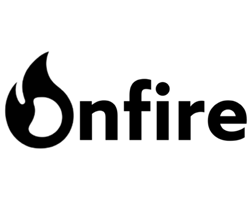5 Secrets to Designing the
"Alliance Experience"
By Paul Witkay, Founder & CEO, Alliance of Chief Executives
I recently listened to a Freakonomics interview with Indra Nooyi, CEO of PepsiCo, one of the most respected CEOs in the world. Institutional Investor magazine named her one of the "Best CEOs" from 2008 to 2011, and in 2017, FORTUNE named her the #2 "Most Powerful Woman in Business."
Indra, who will be retiring this year, was reflecting on how she had no experience as a CEO before taking the reins of PepsiCo in 2006. Within two years, she was confronted with the 2008 financial collapse and dramatic changes in retail markets, and had to learn quickly how to lead her organization through crisis.
Indra was asked if it was lonely at the top, and she responded that it was "incredibly lonely." Every CEO knows this to be true. When you're responsible for calling the shots to balance the short and long-term interests of shareholders, customers, employees and the communities in which you operate, the only ones who fully understand the pressures you face are other CEOs.
So how did Indra respond to these challenges? In addition to her incredibly busy schedule, she made sure to invest time to meet regularly with a private group of CEOs that included the leaders of IBM, Xerox, J&J, GE and American Express. She found it exceedingly valuable to learn how other CEOs viewed the changing world and made difficult decisions to move their companies through major transitions.
I've often heard people refer to the Alliance of CEOs as a "peer group," and it's always bothered me. A peer group is typically defined as a group of people who share certain social characteristics, such as age, class, occupation, education or similar interests. However, CEOs are tremendously diverse in age, educational background, life experience and expertise, and we believe that we learn far more from people who think differently.
When we launched the Alliance of CEOs in 1996 in the fast-paced San Francisco Bay Area, our world was just beginning to be revolutionized by the Internet and globalization. We carefully designed the Alliance to create a unique environment for CEOs to learn faster, make better decisions and move forward with greater confidence.
Conclusions
I agree with Indra Nooyi that being a CEO is incredibly hard and very lonely. The pressures CEOs face today continue to grow at an exponential rate, which is why CEOs must invest every minute of their time wisely. In keeping with the Alliance philosophy, we welcome ideas to extract even more value from the extraordinary pool of wisdom that lies within the Alliance community, so we can make the "Alliance Experience" more powerful than ever.
Secret #1: Purpose / Philosophy
We believe that leadership really, truly matters. CEOs don't typically complain about problems—they take action to make the world a better place by finding innovative solutions to both everyday problems and major global challenges. In the process, CEOs provide meaningful work for their employees and help their communities thrive.
The Alliance creates "safe" environments where CEOs can discuss their most sensitive, strategic challenges in total confidentiality. We force each CEO to think through how they would address a wide variety of real-world, strategic challenges and opportunities. The idea is to be comfortable being uncomfortable. Major strategic decisions are never easy, so we don't strive to arrive at "The Answer." Instead, we stretch our brains to generate as many different approaches as possible and promote contrarian thinking, in order to avoid groupthink.
Secret #2: "Fit"
Our members bring intelligence, experience, wisdom and a healthy sense of humor to the Alliance—along with the humility to believe that great ideas can come from anyone. Most importantly, they are willing to share their knowledge and collaborate with each other.
Not every CEO is willing to do this, which is why we get to know every potential member before inviting them to join. Each group is carefully crafted to create the best environment for each individual member. There are private Alliance groups for members who lead companies ranging from small, private companies to global, public enterprises. And, because business is dynamic, members are able to transfer between groups when situations change.
We consider three primary design factors when "fitting" CEOs together:
- Trust is absolutely critical. Alliance members must feel comfortable talking about virtually anything with their private group – particularly their most sensitive and strategic situations, such as acquisitions and competitive threats. Without openness and candor, group members are unable to dig deep into the most important issues. It's amazing how quickly trust develops when you bring the right CEOs together in the right environment.
- Respect. Each member must feel they can contribute knowledge or experience to the group and also learn from the other CEOs. As CEOs get to know each other, respect is earned in a variety of ways – by sharing past experiences, their current challenges, their visions for the future and their unique ways of thinking.
- Diversity is by design. A core philosophy of the Alliance is the "power of diversity." We learn faster from leaders who think differently, so we intentionally seek members who lead companies in every industry and market sector. Different perspectives also come from having leaders who took different paths and solve problems dissimilarly. We're fortunate to have members who have grown up in more than 50 different countries. Confident leaders welcome alternative points of view because they realize most innovations come from ideas generated outside their own industries.
Secret #3: Focus
The Eisenhower Principle differentiates between two kinds of problems: the urgent and the important. It's very easy to get caught up in fire-fighting urgent matters of the day, but great Alliance groups don't settle for simply discussing current problems. They strive to focus on the biggest issues—the ones that move the needle and stretch each member to think deeply.
We've found that more ideas come when we mentally escape our own problems and focus on compelling and complex challenges that other CEOs face. When we rethink the most basic assumptions a CEO has about another business—such as its core value propositions, products and business model—our brains naturally extrapolate to rethink our own assumptions, armed with fresh insights.
Secret #4: Method
The Alliance has created a unique methodology that taps neuroscience principles to enable CEOs to think more deeply and creatively. We ask members to avoid their natural tendency to address the immediate problem and offer a solution. Instead, we ask them to imagine sitting in the seat of another CEO and take responsibility for making the decisions to navigate the company forward. They often identify deeper underlying issues or opportunities and generate fresh approaches with far greater impact.
The approach involves three steps:
- Framing – Individual members frame their strategic challenge or situation with just enough information to enable other members to imagine what it's like to "sit in their seat."
- Exploring – All other members collectively ask questions to dig into the root cause of problems and gain a deeper understanding of all critical factors. It's very educational to observe how different CEOs explore various aspects of new situations.
- Deciding – No CEO has access to complete and perfect information before making decisions. Therefore, once the group has gathered as much relevant information as necessary, we ask each member to decide what they personally would do if they were the CEO. Although we certainly value ideas from those with the most relevant experience, often the most creative and fresh approaches come from CEOs with the least experience in a particular industry.
Secret #5: Community & Culture
Upon founding the Alliance, I focused on the value of deep, strategic discussions within our private groups. I soon noticed a number of unanticipated things happening. New companies were formed, mergers and acquisitions took place, partnerships were developed and strategic connections were made with other market and industry leaders.
Although the core of the Alliance will always be our private groups, we realized we could create even more value for our members when they tap the collective wisdom and experience of the entire Alliance community, including alumni. The original Alliance members developed a culture wherein members are always willing to help one another if the need is important. As the Alliance has grown, the number of connections our members have made has increased exponentially. They happen in a variety of ways, ranging from private "behind-the-scenes" introductions to Alliance activities such as CEO roundtables, keynote breakfasts and Alliance dinners.











































